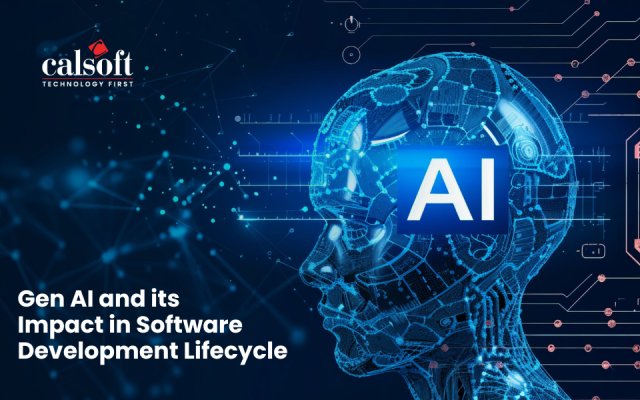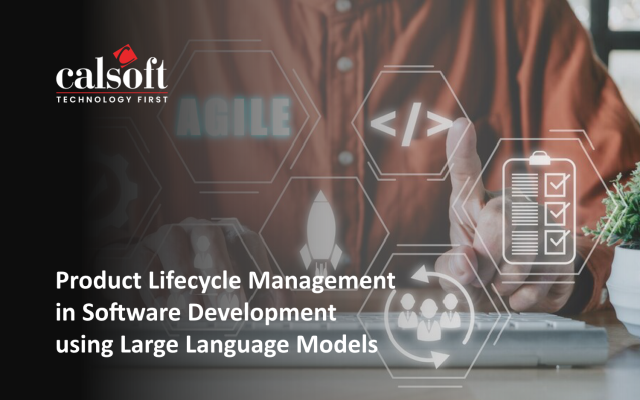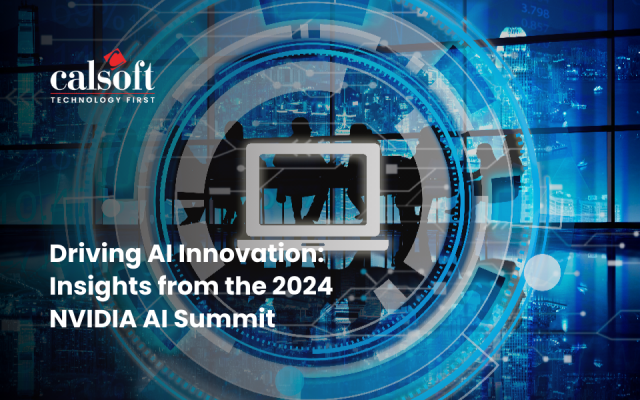The emergence of next-generation networking technologies such as 5G, SD-WAN, Edge Computing, Wifi-6 coupled with Cloud Computing, Realtime AR-VR, Seamless ADAS, Smart Classroom Content Delivery, Blockchain and AI is paving the path for the rise of the Next wave of Network Revolution.
“We call it Smart Networks” – In this Article we explore the next decade and the potential technology shift in the Enterprises with Artificial Intelligence.
How can an Enterprise “Ride the wave of the Technology Shift”?
“The World of Serverless is upon us”
Calsoft has been working since decades with Technology frontier companies in Storage & Networking and has gained rich set of experience in this space, with extensive inhouse research in collaboration with reputed Universities and open source contributions has helped us solve numerous challenging problems of customers across the globe who aspires to be the Leader in Next Gen Technology.
Gartner predicts that large enterprises’ exclusive use of AIOps and digital experience monitoring tools to monitor applications and infrastructure will rise from 5% in 2018 to 30% in 2023.
The immediately thrusting challenge where Enterprises leveraging AIOps have created an impact is to automated, evolve, and self-improve infrastructure with Zero-Touch capabilities these Enterprises are leading the way into the Future, they are infrastructure ready and embracing the Big-Data transformations.
Evolution of enterprise networks
Network automation is taking a new shape with the accelerated adoption of AI, ML, IoT, SD-WAN, Intent-Based Networking (IBN), Network Orchestration, and other advanced technologies. AI is helping networks become more experience-centric, providing a seamless experience to the user with its ability to enable intelligent decisions. IBN uses a combination of AI, ML, and Network Orchestration to provide secure optimization and automation of network processes by reducing human intervention, downtimes, and delivery time.
According to a recent report by Global Market Insights, the market valuation of IBN is expected to be more than $4 billion by 2026. The increasing demand for network infrastructure management aligning to business processes and goals is expected to contribute significantly to the market growth.
The most common challenge faced by enterprises planning to adopt these advanced technologies for their network automation and process improvement is the lack of in-house skillsets to implement them. This calls for a trusted partner like Calsoft, who can look after the needs of network modernization.
Calsoft has partnered with top enterprises and data centers to automate networks, improve processes, monitor networks through real-time analytics, and bridge the gap between enterprise and IT.
Mapping the intent of the business with the network and by providing the four capabilities essential for a complete IBN using AI (as per Gartner) are:
- Translation and validation
- Automated implementation
- Awareness of network state
- Assurance and dynamic optimization
Essentially, the whole process & the feedback of the process are AI-driven. Let’s understand the role of AI in this whole “mapping the intent” process by knowing more about the role of AI in IBN.
AI for IBN
The business intent is defined by the network operator and presented in a human language. This intent is then translated into policies using natural language processing (NLP) and Deep Neural Network. This bridges the intent with the networking-specific framework and makes further implementation easy and automated. To make this process more effective and secure, various validation and authentication modules are implemented.
In traditional networks, any incident, say bandwidth bottleneck, is detected only after it has happened. AI-driven networks use real-time predictive analytics with the power of visualization for scanning the network and identifying the issues likely to arise in case of a breakdown. Such networks also possess the capability to dynamically optimize the processes with a feedback loop. This is essential for the network to work seamlessly and securely. As the advanced neural nets learn the domain and the latent space of the data, advanced simulation can be run to find and fix loopholes.
Use Cases
Calsoft has proven expertise in realizing the information from real-time data analysis using advanced technologies like AI. Here are a few of the use cases:
The Open Digital Architecture (ODA) has identified two key opportunities for CSPs where Autonomous Networks play a critical role:
- Digital Operations Efficiency: Evolution of networks towards dynamic, software, and virtualized solutions leads to increased scale and velocity of network change. Operational efficiency can only be maintained through automation where Autonomous Networks capabilities handle routine events.
- Digital Service Enablement: Opportunities are emerging for CSPs through partnering and platform business models where they provide trusted enablers to Vertical Industry Customers. One enabler is the easy-to-use & modify Networks-as-a-Service or NaaS. Autonomous networks facilitate customer self-service for scaling and dynamic reconfiguration of NaaS whilst handling the complexities of dynamic networks invisibly. For example: virtualization, closed control loops, policy, etc.
For service providers to be successful with their AI and automation strategies, they need to come together with the wider industry ecosystem to build a common understanding of autonomous networks.
- Network Security – Advanced Threat Detection (ATD): A solution to implement an advanced threat detection system for network security using ML techniques to identify malware based on its behavior rather than through fingerprinting (signature-based). Runs efficiently on large datasets. The project utilized modern ML algorithms to analyze and classify network packets in real time. This provided flexibility to perform the desired operation based on prediction.
- AI for UX: AI solution to understand mobile users’ Internet experience, mobile fault, user complaints, etc. Various parameters were combined to understand the content behavior of the consumer; improve QoS based on customer type; pinpoint the deterioration factor, type, and amount of consumption per user & location; and improve location-based revenues.
- Network Optimization: Deep understanding of network technologies help enterprises improve their network offerings and create benchmark network solutions. Embedding intelligence in the network processes using AI & ML encourages the data-driven process optimization that creates massive improvement in the user experience, increasing the revenue score.
To read these use cases in detail and explore more use cases in Networking & Telecom, IBN, AI, ML, orchestration write to us at marketing@calsoftinc.com.






